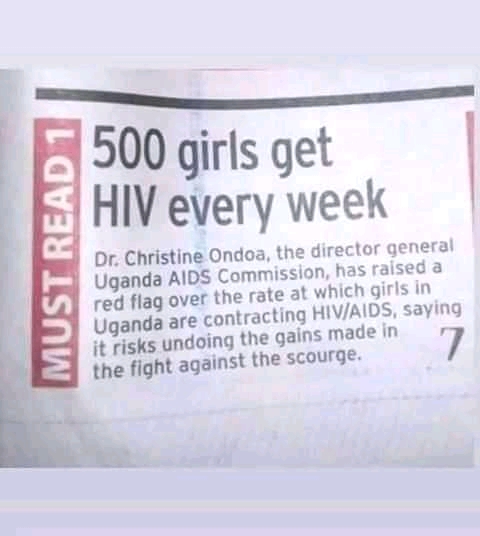500 girls get HIV every week
By Correspondent
The prevalence of HIV among adults aged 15 to 64 in Uganda is 6.2%: 7.6% among females and 4.7% among males. This corresponds to approximately 1.2 million people aged 15 to 64 living with HIV in Uganda. HIV prevalence is higher among women living in urban areas (9.8%) than those in rural areas (6.7%).
According to the Director General Uganda AIDS Commission, the rate at which girls in Uganda are contracting HIV/AIDS, it risks undoing the gains made in the fight against the scourge. It is shocking, 500 girls get HIV every week!

Uganda launched programme to provide free antiretroviral drugs to HIV/AIDS patients across the country. “Until today, a diagnosis of HIV/AIDS has meant a death sentence to ordinary Ugandans who could not afford these drugs”, said a health worker.
Ugandan poster to raise awareness among men about HIV/AIDS. In time, the plant is expected to lower the cost of these drugs and make them more widely available in Uganda. At one time, ARVs cost US$ 1500 per month, far beyond the pocket of the average Ugandan.
About thirteen years ago a new Ugandan pharmaceutical factory began producing antiretroviral medication drugs locally, something the government said would significantly increase the number of HIV-positive people accessing the life-prolonging drugs across the country and the East African region. However, it remained in words, practically is not realized.
KEY POINTS
- In a country where 1.4 million people are living with HIV, women and young women in particular are disproportionately affected.
- There are many political and cultural barriers which have hindered effective HIV prevention programming in Uganda. As a result, new HIV infections are expected to rise in coming years.
- While there have been increased efforts to scale up treatment initiatives in Uganda there are still many people living with HIV who do not have access to the medicines they need.
- Punitive laws and stigmatising attitudes towards men who have sex with men, sex workers, and people who inject drugs has meant that these groups most vulnerable to infection are far less likely to engage with HIV services.
